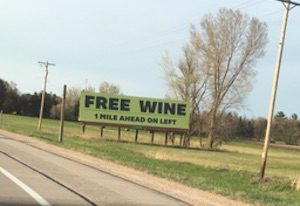How am I doing?
by Mark Hoover

Hi, Mike here. I recently checked in with a friend via email to see how he was doing. And he was brave enough to level with me. Like so many others, he’s fighting the black dog of depression. One of the awful things about depression can be a sense of isolation and aloneness—our friend Mark Hoover has generously agreed to post here, in hopes fellow travelers will understand that no, they’re not alone.
Wow, I always thought my first ever post would be about role playing games or comic books. I’m honored that Mike encouraged me to write this and to have a spot on this blog is an appreciated privilege.
Lots of folks have asked me lately how I’m doing. Most are well-meaning acquaintances and to them I usually respond “oh I’m fine, a little down… for obvious reasons.” I’ve recently gotten divorced and so naturally everyone just assumes I’m heartbroken, gives me a pat on the shoulder, tells me to keep my chin up.
My reality is a word that usually invokes a reaction in folks like theater audiences in horror movie trailers from back in the fifties: Depression (cue organ music blast and stampeding crowds).
So I’m outing myself with this post. I’ve only recently been diagnosed, but I suspect this has been settling on me for a few years now, layer by layer. I have never had thoughts of self-harm or harming others, thank goodness, but otherwise I have the classic symptoms: I don’t speak nicely to myself, have let all but the most vital things slide, and respond with a shrugging “why bother” to a lot of the messes and conflicts in my life.
I’m not proud of this way of being. Here and there I have good days, where I can make myself get up and get active. My two daughters have not suffered during my off days, but that doesn’t ease the shame I feel. I don’t feel active in my life or theirs… more like I’m just filling time, reacting whenever absolutely necessary.
During bad days, I feel unloved and unlovable. I tell myself I’m the crazy one; that I’ve broken things beyond repair this time. See this isn’t the first serious setback in my life, but in every other instance I’ve bounced back, stronger for the experience. I know, logically that these negative thoughts are exaggerated by my disease and that I’m capable of coming out of this as before. Knowing a thing and feeling it however are two VERY different things.
My depression is an evil Jimminy Cricket on my shoulder, keeping track of every mistake, every misfortune, then pointing out that these were inevitable; the reward of trying to be remarkable or reach for life’s heights. It’s like living through layers of plastic wrap. I can see out into the world, albeit distorted, but I can’t actually feel it.
The most insidious part of my disease is isolation. It very convincingly suggests that my condition is unique and so, since no one else has ever gone through this no one else can help. One more layer of plastic to fight through.
I say MY depression because I’ve learned that this disease is chimeric and has lots of varieties. More than that, my depression is right in that everyone suffering is dealing with something very personal to them. This seems to lend credence to the isolation it preaches. It is a treadmill of thought that never stops and never lets you off. Every once in a while though, you get water breaks.
Someone recently coined these to me as “routines”; things folks suffering depression do to try and break the cycle of negativity in their head. My own involve writing, planning my games, and experiencing nearly all aspects of 80’s pop culture. Now these are all things which, in the past have centered me, brought me peace. Under the plastic layers of my depression, these activities barely register as anything more than chores. But somewhere in the back of my head, something stirs whenever I force myself to do these things: hope.
Playing golf with my dad for years taught me to respect one primal rule of nature: muscle memory. Long after logic fails you, your body remembers things it’s done and the resulting response to those actions. Hit a long drive enough times with a certain swing and every time you tee up your body will fall into the predictable pattern that gets you three hundred yards.
So the “hope” that’s trying to claw it’s way to the surface is nothing more than my body, my brain remembering that performing these activities are supposed to yield a positive result. Of course, my depression tells me I’m fooling myself. When I write, it points out how terrible I am; when I’m designing my game, it reminds me all the players who’ve quit; when I watch an old movie my depression triumphantly points out how stuck I am in the past.
The cherry on top of this nightmare sundae is that all of my own depression’s commentary mirrors criticisms I’ve heard from external sources. We all make mistakes at our jobs or in our personal relationships, but for me the disease has a way of using this as evidence to prove its point.
So, THAT’S how I’m doing.
What am I doing about it? Well I’m actively in therapy. I’m also forcing myself out into the world around me, even when I don’t want to. I seek out nights with friends, play with my kids, and have joined a writer’s group and other social outlets. I know that in my case the best weapon against my depression is other people. They have to be the RIGHT people, but when I find them I stick to them like glue.
You remember that isolation? Well recently after writing I stayed to have lunch with some of the group. Their stories, their experiences, they were just like mine. From the way they’d been raised and the role we all seemed to take in our families to their own bouts with depression. Yet as I sat there I also recognized these were peers, people I admire: published authors, passionate advocates and local gurus. If we’d all sprung from such similar roots and these successful humans had all triumphed through their plastic prisons, then I can, too.
Hope.




